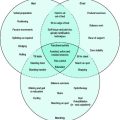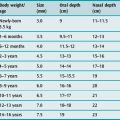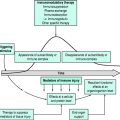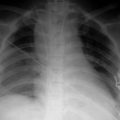Chapter 59 Host defence mechanisms and immunodeficiency disorders
There is a coordinated immunological response to infection involving both cellular and humoral components. The outcome of an infection will be determined by the balance between the body’s ability to eliminate invading microorganisms and the microorganism’s virulence. Humans have diverse host defence mechanisms to protect the different anatomical compartments of the body from a great variety of microorganisms (Table 59.1). There are many ways in which the immune system can be defective, leading to an increased propensity to infections. The immune response also needs to be controlled to avoid inappropriate and excessive activation, which may damage the host. A certain degree of host damage is inevitable during the response to infection, particularly if there is systemic activation resulting in disseminated intravascular coagulation (DIC) and an excessive inflammatory response.
Table 59.1 Host defence mechanisms
| Physical barriers |
| Skin and mucosal surfaces |
| Cilia |
| Fever |
| Lysozyme |
| Lactoferrin |
| Acute-phase proteins, e.g. C-reactive protein |
| Fibronectin |
| Immune system, including secondary mediators |
| Other mediators of inflammation |
| Kinins |
| Vasoactive amines |
| Coagulation system |
THE ADAPTIVE IMMUNE SYSTEM
ANTIGEN PRESENTATION
The most important events in the initiation of an immune response are the processing and presentation of fragments of the microorganism in a form which makes the fragments antigenic to lymphocytes. Major histocompatibility complex (MHC) class I (human leukocyte antigen (HLA)-A, B, C) and class II (HLA-DR, DP, DQ) molecules are the major cell-surface antigen presentation molecules. These molecules also determine the nature of the subsequent response against the antigen. Class I MHC molecules are present on most nucleated cells, and present processed endogenous peptides (such as fragments of viruses) to the antigen receptor (T-cell receptor; TcR) of T cells expressing CD8 molecules. Class II MHC molecules present antigenic fragments of microorganisms which are exogenous to cells and have been taken into the cell by phagocytosis, in the case of macrophages and monocytes, or by binding to antigen-specific surface immunoglobulins (the B-cell antigen receptor), in the case of B cells. Antigens presented on class II MHC molecules bind to TcRs on CD4+ T cells.
IMMUNE DEFECTS UNDERLYING IMMUNODEFICIENCY DISORDERS
Defects of the immune system may give rise to immunodeficiency disorders, which are generally of five types: antibody deficiency, complement deficiency, cellular immunodeficiency, combined immunodeficiency (T cells, B cells and NK cells) and phagocyte dysfunction.
CELLULAR IMMUNODEFICIENCY
Impairment of cell-mediated immune responses leads to an increased propensity to infection with microorganisms which are normally controlled by cellular immune responses (Table 59.2). These microorganisms are often pathogens that replicate intracellularly (intracellular pathogens) and cause persistent (latent) infections that reactivate when the cellular immune response against them becomes ineffective.
Table 59.2 Microorganisms that most commonly cause disease in patients with cellular immunodeficiency
| Mycobacteria | Mycobacterium tuberculosis |
| Non-tuberculous mycobacteria | |
| Bacteria | Salmonella spp. |
| Shigella spp. | |
| Listeria monocytogenes | |
| Fungi and yeasts | Candida spp. (mucosal infections) |
| Pneumocystis jiroveci | |
| Cryptococci | |
| Aspergillus spp. | |
| Protozoa | Toxoplasma gondii |
| Cryptosporidia | |
| Viruses | Herpes simplex viruses |
| Cytomegalovirus | |
| Varicella-zoster virus | |
| Epstein–Barr virus | |
| Molluscum contagiosum virus | |
| JC virus (cause of progressive multifocal leukoencephalopathy) |
IMMUNODEFICIENCY DISORDERS
Diagnosis of an immunodeficiency disorder in a patient with an abnormal propensity to infections is dependent on the demonstration of an immune defect, as indicated in Table 59.3.
| Antibody-mediated immunity |
| Serum immunoglobulins, including IgG subclasses |
| Systemic antibody responses (after vaccination if necessary) |
| Polysaccharide antigens, e.g. pneumococcal |
| Protein antigen, e.g. tetanus toxoid |
| Blood B-cell (CD19+) counts |
| Cell-mediated immunity |
| Delayed-type hypersensitivity (DTH) skin test responses to antigens |
| Blood T-cell (CD3+) and T-cell subset (CD4+ or CD8+) counts |
| Phagocyte function |
| Blood neutrophil numbers |
| Tests of oxidative killing mechanisms, e.g. NBT test |
| Leukocyte expression of CR3 (a CD18 integrin) |
| Neutrophil migration assays |
| Bacteria or Candida killing assays |
| Complement system |
| Immunochemical quantitation of individual components |
| Functional assays of the classical pathway (CH50) or alternative pathway (AH50) |
IgG, immunoglobulin G; NBT, nitroblue tetrazolium.
ANTIBODY DEFICIENCY
PRIMARY ANTIBODY DEFICIENCY DISORDERS
Failure of B-cell production or the presence of immature B cells due to a defect of differentiation is the cause of most primary antibody deficiency disorders.1 B cells are absent from blood and secondary lymphoid tissues in patients with X-linked agammaglobulinaemia (XLA) because mutations of the Btk gene on the X-chromosome result in the absence of a B-cell tyrosine kinase necessary for the maturation of pre-B cells to B cells in the bone marrow. In the hyper-IgM immunodeficiency syndrome, B cells are able to differentiate into plasma cells secreting IgM, but not IgG or IgA. The X-linked form of this condition results from mutations in the gene encoding CD40L, which is critical in delivering a T-cell signal to differentiating B cells.
Common variable immunodeficiency (CVID) and IgA deficiency appear to be the consequence of immunoregulatory defects which result in impaired B-cell differentiation. Severe immunoglobulin deficiency (hypogammaglobulinaemia) and systemic antibody deficiency are characteristic of CVID, whereas most individuals with IgA deficiency are asymptomatic. Those IgA-deficient patients who suffer from recurrent infections often have a defect of systemic antibody responses, which commonly manifests as deficiency of an IgG subclass and/or impairment of antibody responses to polysaccharide antigens.2
ACQUIRED ANTIBODY DEFICIENCY DISORDERS
B-cell chronic lymphocytic leukaemia or lymphoma and myeloma are commonly associated with reduced synthesis of normal immunoglobulins, which may result in immunoglobulin and antibody deficiency resulting in bacterial infections.3 A thymoma is a rare cause of immunoglobulin and antibody deficiency, and should be considered in a patient presenting with primary immunoglobulin deficiency after the age of 40.4 Impaired production of antibodies against polysaccharide antigens contributes to the susceptibility of asplenic patients to infection with encapsulated bacteria, such as pneumococci and meningococci, particularly in patients who had haematological malignancy.5
CELLULAR IMMUNODEFICIENCY
PRIMARY CELLULAR IMMUNODEFICIENCY
Complete or partial absence of the thymus gland resulting in depletion of T cells from blood and lymphoid tissue is the characteristic immunological abnormality in children with the Di George syndrome.6 Infections of the type listed in Table 59.2 occur from birth onwards. A less severe defect of cellular immunity is present in patients with chronic mucocutaneous candidiasis. This usually occurs in patients with the autoimmune polyendocrinopathy–candidiasis–ectodermal dystrophy syndrome (APECED) syndrome, which results from a disorder of T-cell-processing in the thymus.7
ACQUIRED CELLULAR IMMUNODEFICIENCY
Acquired defects of cellular immunity are by far the most common cause of cellular immunodeficiency. Infection of cells of the immune system by human immunodeficiency viruses (HIVs) 1 and 2 is the most common (see Chapter 60). Less commonly, Hodgkin’s disease, T-cell lymphomas and sarcoidosis may also be complicated by opportunistic infections occurring as a consequence of cellular immunodeficiency. A thymoma is a rare cause of chronic mucocutaneous candidiasis which, like thymoma and immunoglobulin deficiency, occurs later in life.4
TREATMENT OF CELLULAR IMMUNODEFICIENCY DISORDERS
Since most infections complicating cellular immunodeficiency are reactivated latent infections, an important aspect of management is prevention of infection by the use of prophylactic antimicrobial drugs, as exemplified by HIV-induced immunodeficiency.8 In circumstances of acquired cellular immunodeficiency it is essential to take into account the severity and duration of immunodeficiency. It is possible to predict the likelihood of infection and the likely pathogens by determining the degree of cellular immunodeficiency. This allows for appropriate decisions to be made regarding investigations, treatment and prophylaxis.
COMPLEMENT COMPONENT DEFICIENCY
PRIMARY COMPLEMENT DEFICIENCY
Congenital deficiency of C3 is extremely rare and usually causes a propensity to severe pyogenic infections. Deficiency of MAC components (C5–9) is more common, and should be considered in patients with meningococcal infections, particularly when the infections are recurrent.9 Deficiency of classical pathway components (C1, C2, C4) may also result in an increased propensity to infection with meningococci and some other bacteria, but most affected individuals do not experience recurrent infections.
PHAGOCYTE DISORDERS
PRIMARY DISORDERS OF PHAGOCYTOSIS
Congenital neutropenias are rare. Defects of phagocyte function usually affect chemotaxis, adhesion or intracellular killing, either alone or in combination. The best-characterised defect of phagocyte adherence results from a congenital absence of the β-subunit of CD18 integrins in patients with leukocyte adhesion deficiency syndrome type 1.10 Defects of intracellular killing are usually caused by a deficiency of microbicidal enzymes. In chronic granulomatous disease (CGD), deficiency of a phagosome enzyme (NADPH oxidase) results in ineffective oxidative killing mechanisms.11 CGD usually presents in childhood but may present in adults, even as late as the seventh decade.12 It should be considered in patients with recurrent abscesses or suppurative lymphadenitis, and in patients with pneumonia caused by Staphylococcus aureus or Aspergillus spp. infection.
COMBINED IMMUNODEFICIENCY DISORDERS
PRIMARY COMBINED IMMUNODEFICIENCY
There are many primary combined immunodeficiency syndromes, which present in early childhood.13 Some are still classified descriptively, but the molecular defects have now been demonstrated for many of them. For example, defective expression of MHC class II molecules, adenosine deaminase (ADA) deficiency, and deficiency of the common γ-chain of the receptor for several interleukins (IL-2, 4, 7, 9, 15, 21) all result in a deficiency and/or functional impairment of B cells, T cells and sometimes NK cells. Deficiency of the interleukin receptor common γ-chain results from mutations of its gene on the X-chromosome and is the underlying defect of X-linked SCID.
ACQUIRED COMBINED IMMUNODEFICIENCY
Combined immune defects are a characteristic of several acquired immunodeficiency disorders.
Haemopoietic stem cell transplantation
Combined immune defects may result in severe infections in patients who have received an HSCT.14 Following transplantation, the recipient’s immune system is reconstituted with donor cells. A degree of immunocompetence is passively transferred from the donor to recipient by antigen-specific lymphocytes, but as this and any residual immunocompetence of the recipient declines, an immunodeficient state exists until the donor immune system is established. Consequently, both antibody-mediated and cell-mediated immunity are deficient in the first 3–4 months after transplantation and may remain deficient for a longer period of time in patients with GVHD. This combined immune defect is often compounded by neutropenia and/or the effects of corticosteroid or immunosuppressant therapy for GVHD. Defective antibody responses may persist for several years after transplantation, particularly antibody responses against polysaccharide antigens.
Critical illness
Many patients who are critically ill as a result of surgery, trauma, thermal injury or overwhelming sepsis also have acquired immune defects.15 These defects include abnormalities of cellular immunity, immunoglobulin deficiency and impaired neutrophil function. They appear to be associated with an increased propensity to infections and arise from abnormalities that are complex and multifactorial. Impairment of cell-mediated immune responses usually manifests as decreased T-cell proliferation and impaired delayed-type hypersensitivity responses, and probably results from a combination of factors, including the effects of anaesthetic drugs, blood transfusion, negative nitrogen balance and serum suppressor factors, including cytokines such as TNF. Phagocyte defects are mostly due to impairment of neutrophil chemotaxis by serum factors, and impaired intracellular killing. Deficiency of serum immunoglobulins also occurs, especially IgG deficiency, and may be associated with antibody deficiency. Serum leakage is a factor in patients with thermal injuries, and reduced synthesis and increased catabolism of immunoglobulins occur in many critically ill patients.
SUMMARY: APPROACH TO THE IMMUNODEFICIENT PATIENT
1 Buckley RH. Primary immunodeficiency diseases due to defects in lymphocytes. N Engl J Med. 2000;343:1313-1324.
2 French MA, Denis K, Dawkins RL, et al. Infection susceptibility in IgA deficiency: correlation with low polysaccharide antibodies and deficiency of IgG2 and/or IgG4. Clin Exp Immunol. 1995;100:47-53.
3 Tsiodras S, Samonis G, Keating MJ, et al. Infection and immunity in chronic lymphocytic leukemia. Mayo Clin Proc. 2000;75:1039-1054.
4 Tarr PE, Sneller MC, Mechanic LJ, et al. Infections in patients with immunodeficiency with thymoma (Good syndrome). Report of 5 cases and review of the literature. Medicine (Baltimore). 2001;80:123-133.
5 Cherif H, Landgren O, Konradsen HB, et al. Poor antibody response to pneumococcal polysaccharide vaccination suggests increased susceptibility to pneumococcal infection in splenectomized patients with hematological diseases. Vaccine. 2006;24:75-81.
6 Hong R. The DiGeorge anomaly. Clin Rev Allergy Immunol. 2001;20:43-60.
7 Collins SM, Dominguez M, Ilmarinen T, et al. Dermatological manifestations of autoimmune polyendocrinopathy–candidiasis–ectodermal dystrophy syndrome. Br J Dermatol. 2006;154:1088-1093.
8 Kovacs JA, Masur H. Prophylaxis against opportunistic infections in patients with human immunodeficiency virus infection. N Engl J Med. 2000;342:1416-1429.
9 Fijen CA, Kuijper EJ, te Bulte MT, et al. Assessment of complement deficiency in patients with meningococcal disease in The Netherlands. Clin Infect Dis. 1999;28:98-105.
10 Bunting M, Harris ES, McIntyre TM, et al. Leukocyte adhesion deficiency syndromes: adhesion and tethering defects involving beta 2 integrins and selectin ligands. Curr Opin Hematol. 2002;9:30-35.
11 Winkelstein JA, Marino MC, Johnston RBJr., et al. Chronic granulomatous disease. Report on a national registry of 368 patients. Medicine (Baltimore). 2000;79:155-169.
12 Schapiro BL, Newburger PE, Klempner MS, et al. Chronic granulomatous disease presenting in a 69 year old man. N Engl J Med. 1991;325:1786-1790.
13 Buckley RH. Advances in the understanding and treatment of human severe combined immunodeficiency. Immunol Res. 2001;22:237-251.
14 Ninin E, Milpied N, Moreau P, et al. Longitudinal study of bacterial, viral, and fungal infections in adult recipients of bone marrow transplants. Clin Infect Dis. 2001;33:41-47.
15 Napolitano LM, Faist E, Wichmann MW, et al. Immune dysfunction in trauma. Surg Clin North Am. 1999;79:1385-1416.






